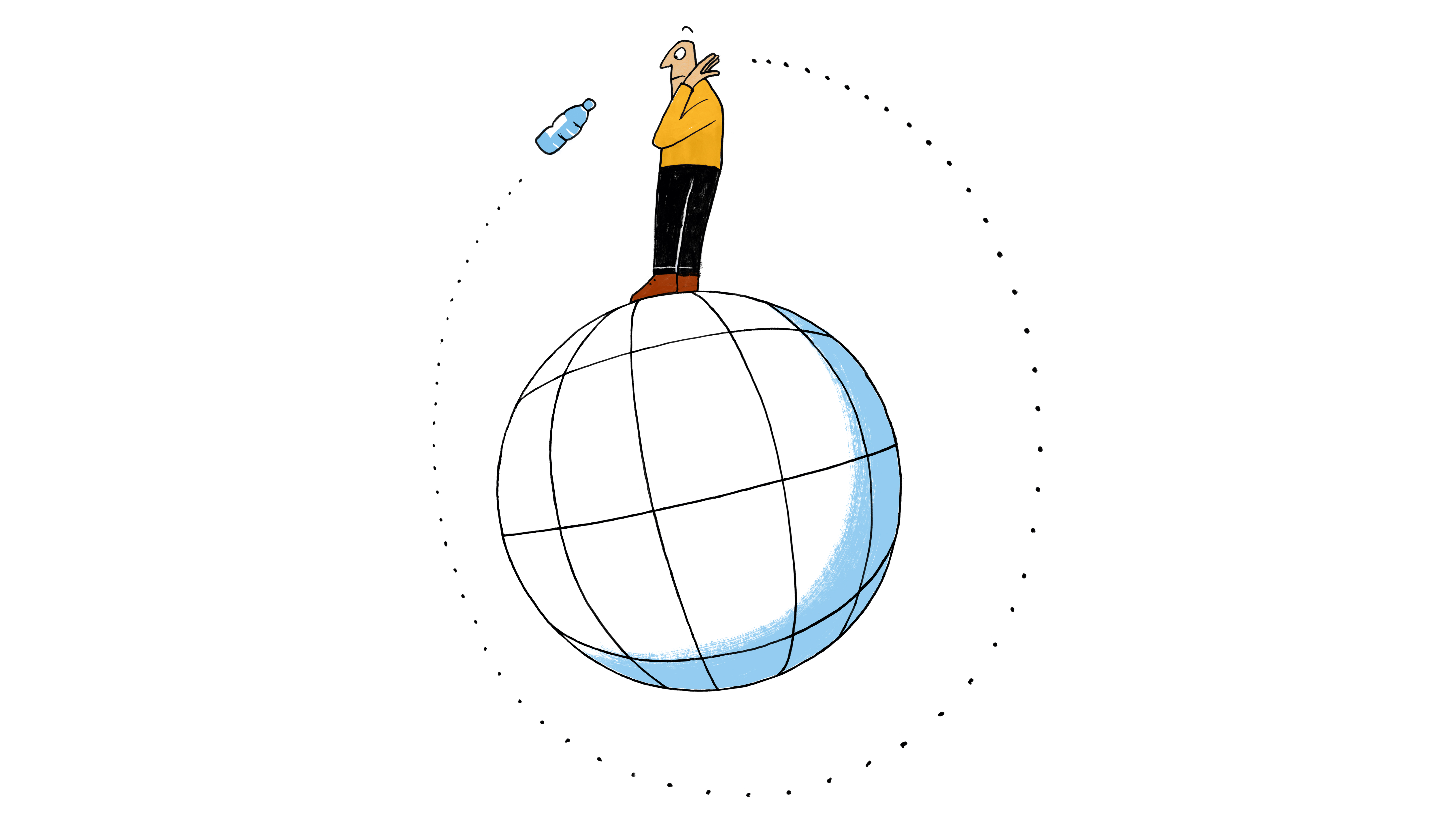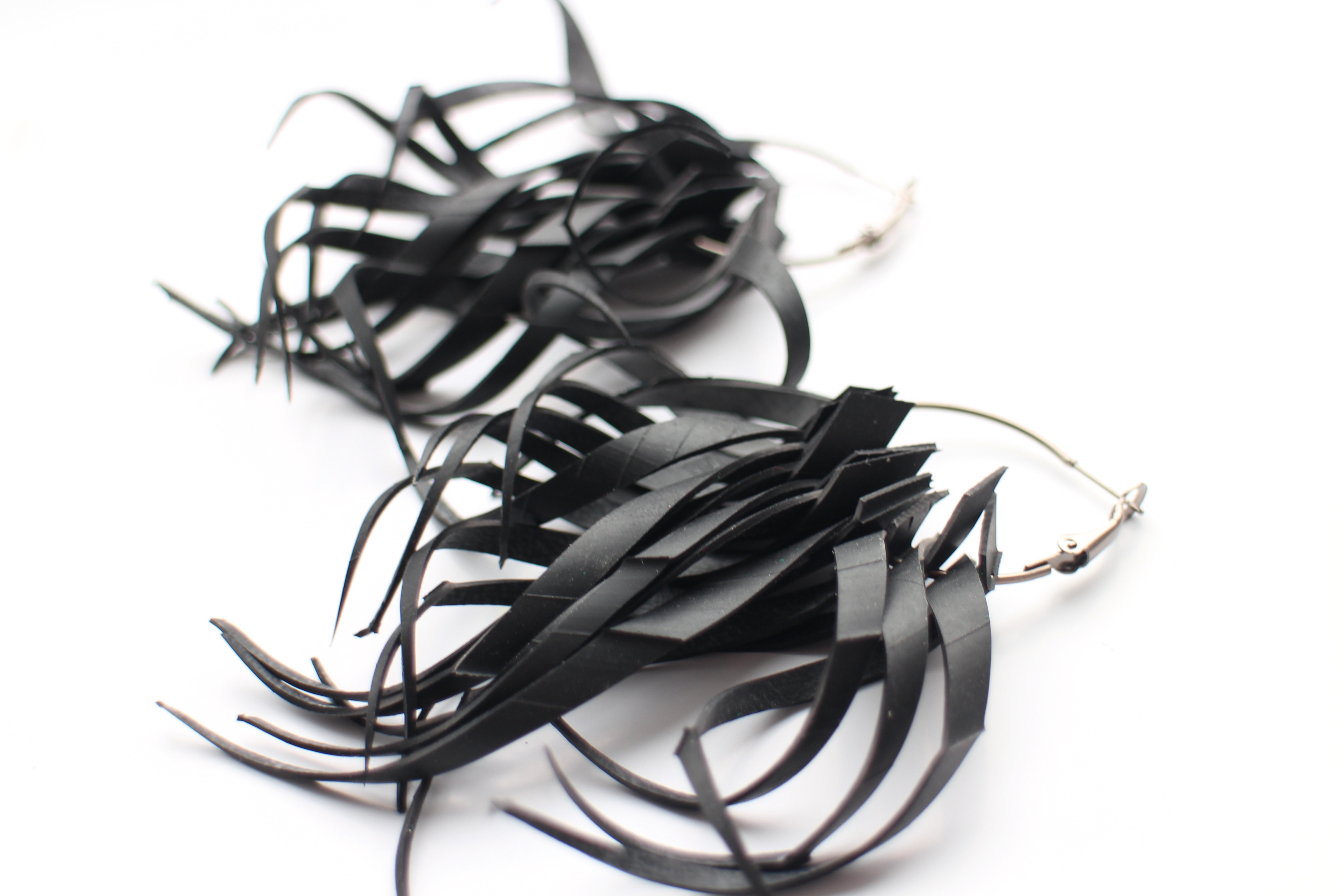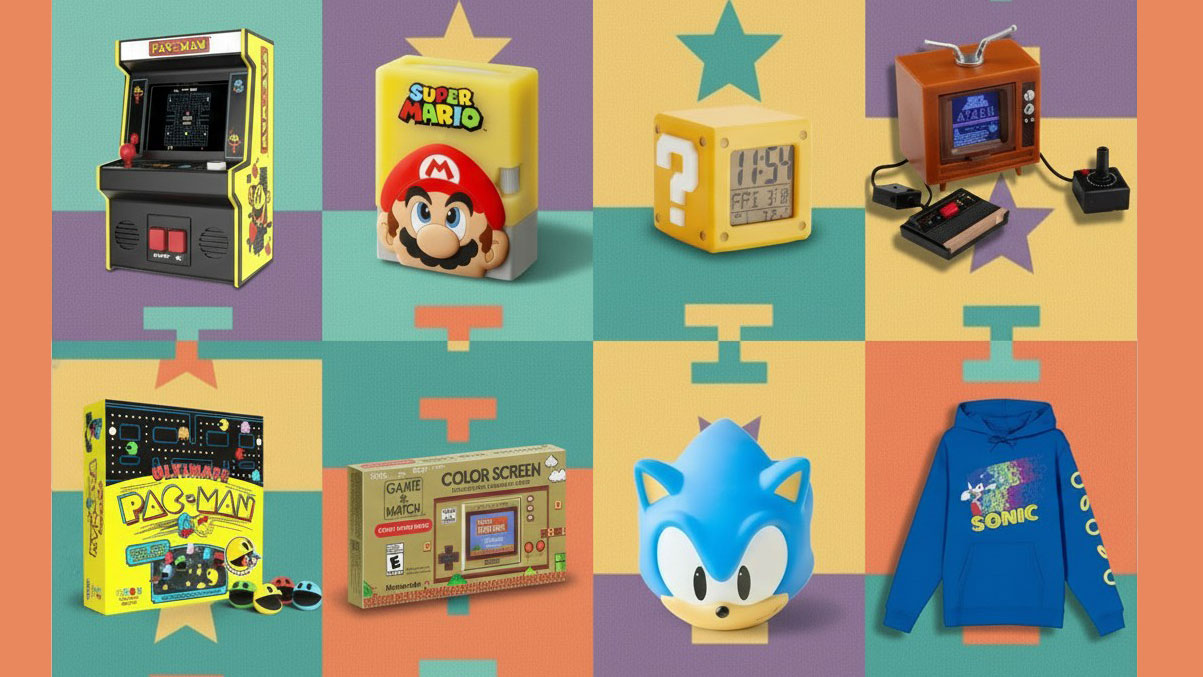Ethical brands: real revolution or fluffy fad?
Branding pioneers reveal how they're making it easier for shoppers to make ethical purchases.

Poor old millennials: maligned for their #shamelessselfies, their avocado toast, their general persistence in existing and need to rapidly tweet about it. But one thing that unites this generation of glossy-haired do-gooders is a trait that surely none of us can vilify: they – for the most part – actively want to buy and consume more ethically.
The idea of ethical branding might have once upon a time conjured up little more than images of hemp sandals and compost toilets, but the ethical brands of 2018 are far slicker, less patchouli-scented beasts, whether we’re looking at fashion, food, homeware or even toilet paper.
Such ethics are centred around a few basic tenets: how good (or bad) the brand’s production is for the environment; how that production affects people (from those on the production line or factory floor, to the consumers themselves); and, more abstractly, how moral the brand is in its actions.
Ethical brands are those with integrity and honesty
Ethical brands are those with integrity and honesty. They’re inherently transparent in their goals and actions, and are accountable for them. But now that brands are savvy to consumers’ increasing concerns around such issues, they’re loudly shouting about their apparent ethical credentials – often, however, with rather opaque and occasionally shaky foundations.
Brands pushing ethics for sales alone, of course, isn’t truly ethical. James Cartwright is a writer and the editor of Weapons of Reason, a magazine from design agency Human After All which looks at global issues including food, power and megacities.
According to Cartwright, a truly ethical brand is one “committed to sustainability” through all points in its supply chain – from product sourcing to distribution, “not using a ridiculous air freight system that has a massive carbon footprint,” and with all those involved being paid and treated with the same rights. In short, “making sure it’s not having an impact on the planet, ecosystem or the people creating it.”

What becomes tricky is when we start to cut through ethical as buzzword, rather than ethical as, well, true ethics. “A lot of people are saying they’re ethical or sustainable, but they commit to things in very abstract terms,” says Cartwright. “Not many people are doing it in a way that’s meaningful.”
Daily design news, reviews, how-tos and more, as picked by the editors.
The biggest changes he’s seen are on an individual, not brand level, such as the concerted move away from using plastic straws, catalysed by shocking images of waste plastic seen by many in the BBC’s David Attenborough-narrated Blue Planet II.
“There’s a lot going on that needs to be addressed,” he says. “There’s a lot more awareness around these issues now, and brands are exploiting that, but I don’t know how much of it goes into the heart of what they do rather than just using sustainability as a buzzword.”
There’s no one fit for every brand
Roberta Lee
Roberta Lee is a stylist who found sifting through ethical claims in fashion brands so arduous, that just over a year ago she set up the Ethical Brand Directory, which meticulously vets brands and offers advice on issues such as sustainability before listing them on her site.
“We ask what they’re doing and what they’re not doing. If we don’t have enough information on their view on ethical trading, their sourcing or their production, I’ll speak to them in person and make recommendations,” says Lee.
“There’s no one fit for every brand. Some people are forming ethical brands from their kitchen tables, others have loads of funding, so we have to take into consideration what they’re working with and advise on what steps to take next.”
Dressing to impress
Like many of those interviewed for this piece, Cartwright points to clothing brand Patagonia as the “benchmark” when it comes to ethics. That’s thanks not only to the way they produce their clothes, but how they engage with them even after they’re sold. Customers can take back worn items to be repaired, free of charge, and gain extensive guidance on how to mend clothes to better ensure they last as long as possible.
Additionally, through its Worn Wear programme, Patagonia buys back gently used clothing from its customers and resells them on its accompanying website. The brand also commits to a programme in which employees can take time off, unpaid, to work on ecological projects near where they live.

The recent wave of ethical start-up brands is also leading to some innovative new business models. Lingerie brand and social enterprise AmaElla was founded by best friends Julie Kervadec and Lara Miller in 2016 to champion slow fashion – a term coined by Kate Fletcher, an ecological design consultant, in 2007.
The phrase aligns ethical fashion with the slow food movement, which “links pleasure with awareness and responsibility”, says Fletcher. As such, AmaElla works only with ethical fashion manufacturers and 100 per cent organic cotton. Perhaps unsurprisingly, its customer base is skewed towards those already aligned with such concepts as organic food, yoga and mindfulness.

In summer 2018 AmaElla began selling using an on-demand model: consumers buy products at a discount before they’re made, then those preorders are pooled and produced in batches. Sure, orders take longer to arrive, but this bold approach means there’s never waste or unsold products. “We want to be the opposite of fast fashion,” says Miller.
“It doesn’t make sense to our sustainable and ethical ethos to produce things if we don’t know whether they’re going to sell. Obviously it’s quite a different business model. People will need time to get used to it, compared to the instant gratification of next day delivery.”
Getting better all the time
At the rather high end of things, Stella McCartney (like the rest of her family), has long been an advocate for environmental issues.
The brand recently launched its new Loop sneakers, designed with the aim of reducing the use of glue in fashion. It’s in-keeping with the idea of circular product design by using hooks and special stitching to replace conventional gluing methods. This means each shoe can be fully dismantled, and all its components are fully recyclable.
A company with a similar outlook is Nashville-based clothing studio Elizabeth Suzann, whose founder Elizabeth Pape published a comprehensive blog post entitled Money Talk that details through words, numbers and charts exactly why and how her garments are priced (for context, sweaters retail at around $285, tees at $145 and trousers at around $245).
In the piece, she discusses how, in recent years, low-cost retailers like H&M and Primark have shifted what consumers view as a fair price for an item; though while prices have dropped, the costs of producing clothes has not.

Pape writes that $10 jeans and $1.90 camisoles can only exist through such shortcuts as “cheap fabrics produced in mills with dangerous conditions; the use of harmful, toxic synthetics; the mishandling of chemical waste and utter disregard for regulations; the rampant exploitation of labour and weak auditing systems in garment factories – both overseas and domestic; unspeakable working conditions; unlivable wages; child labor; health hazards and a general disregard for human life.”
What this all boils down to is the concept of value: what we see as valuable, and what price we place on that value. Few of us could likely afford to buy her clothes all the time, but we probably could consider buying less, and thinking more about what we do buy.
Cost doesn’t predicate the enjoyment we receive from an item, or indeed indicate that said item will last longer. Pape has also cannily tapped in to a new drive for brands to be genuinely transparent. In the fake news era, it makes sense that we want to seek out simplicity and transparency where we can.
Reduce, reuse and repurpose
Of course, Stella McCartney and Elizabeth Suzann come at the pricier end of ethical fashion, but those looking to engage with fashion on a slightly smaller budget are in luck – it’s not that hard. Just buying second-hand from charity shops makes a difference, as does mending clothes rather than buying more.
It’s also worth doing a little research on brands before you buy, which apps can help with. Good on You, for instance, is an ethical shopping app that offers ratings on ethics, sustainability and fairness for brands.
One fashion name that comes high on the list of both ethics and originality is Laura Zabo, a brand that creates footwear, belts, bags, dog collars and more from recycled tyres.

Its eponymous founder was inspired to do so in Tanzania, having spotted some bright handmade sandals at a Maasai market that were made entirely out of repurposed car tyres. Zabo’s processes are all eco-friendly (no toxic glues here); her inspirational packaging is all repurposed (i.e. used boxes); her materials are all vegan and almost entirely recycled.
When she has to buy new parts, such as buckles, she’s conscious to source them locally and responsibly. Zabo still undertakes a large part of the fabrication herself with a small team in east London, and also runs upcycling workshops.
“I want to inspire people to start crafting and enjoy creation,” she says. “That helps to change people’s lifestyles. I hope that people will slowly realise they don’t have to go to H&M – they can make something themselves. I love showing what we can make from waste, especially since few people wear tyres for fashion!”

Speaking to the ebullient Zabo, it’s clear this isn’t just about making accessories – she’s a woman on a mission. “With social media, we’re finally seeing all the damage we’ve caused. People are registering it more now.”
She aligns this increasing awareness with the rapidly growing number of people going vegan (2018 Vegan Society research showed a whopping 350 per cent increase in people “identifying as vegans” in the UK compared to a decade ago).
While it could be argued that this is largely down to factors such as the wellness trend and toned Instagram influencers grinning over meticulously arranged acai bowls, it’s likely that a considerable number of those now avoiding animal products in their diets would also like to avoid them in their fashion and beauty products, too.
Blue ocean strategy
Another brand born of a somewhat exotically sited revelation is CanO Water, which was founded a couple of years ago as an alternative to plastic bottles “after a trip to a remote island opened the eyes of three close friends,” according to the the brand.
As the name suggests, this is literally just water in a can, but it’s claimed that “the aluminium can is the only package that more than covers its recycling costs, helping to finance the collection and recycling of other materials such as glass and plastic.” That sounds a lot more palatable that using plastic, for sure: approximately 8m tonnes of plastic end up in the ocean each year, according to stats provided by CanO Water.

Their green credentials – and likely, the slick, monochrome branding created by co-founder Perry Alexander – have certainly served the brand well. The designs are minimal: black for sparkling, white for still, with a simple serif font arranged both vertically and horizontally against a teardrop device for the typographic mark.
The typefaces are Myriad and Myriad Pro Light, again chosen for their simplicity and neutrality. CanO Water has gone on to sponsor London Fashion Week and supply glitzy events like the Oscars and Vanity Fair parties.

A less cool, but arguably more wide-reaching H20 prospect, is One Drinks, an ethical beverage brand that uses its profits to fund sustainable water projects around the world. Thus far, it claims to have raised ¢G17.4m for sustainable water projects and provided clean, safe water to more than 3.3m people in the world’s poorest communities.
At the other end of the water works, as it were, Who Gives a Crap is a toilet paper brand created entirely with environmentally friendly materials that donates 50 per cent of its profits to help build toilets for those in need. To date, it’s donated more than $1.2m to charity.
The Greenwashing problem
From couture to crap, it’s clear that brands from across the board are now more than ever aligning themselves with ethical promises. Even McDonald’s – often seen as the red-haired, grinning face of corporate greed – is phasing out the use of plastic straws.
Certain policies, however, are about as transparent as our poor polluted oceans. Greenwashing is a term used to describe companies that make concessions to certain environmental or ethical ideas but without any real clout.
“We’re definitely entering a space which is harder for consumers to know who’s telling the truth,” says Lee. “A lot of brands have realised they’re missing out on the ethical consumer market, so there’s a lot of greenwashing going on.”
A large clothing brand, for instance, might introduce a single organic or conscious range, as “that’s cheaper than addressing the whole line and changing their suppliers,” says Lee. “It makes it really difficult for smaller independent brands to compete, as they don’t have the same big marketing budgets, and so, can’t reach as far.”

Zabo is understandably excited at the recent proliferation of smaller ethical brands emerging, but echoes that it’s up to big brands to step up and seriously reconsider their sustainability efforts.
“They’re still the leaders, so they need to make big changes. My audience is obviously much smaller, and I hope to inspire change, but I just can’t reach as many people as a brand like Adidas. The biggest shift we’re going to have to see is when they start to create more ethically – not to drum up good PR, but because they see the wider good in doing so.”
Cartwright’s advice for anyone to start buying and consuming more ethically? “Take time to do your research,” he says. “The difficulty about being ethical in the way you shop or consume is that it’s not made easy. People don’t openly put information about their supply chain out there, so if you’re really concerned, it takes time to do the groundwork. That can get old quick, and it makes shopping more laborious.”
A good place to start is looking out for Fairtrade stickers. The Fairtrade foundation works directly with businesses, consumers and campaigners to “make trade deliver for farmers and workers,” and the Fairtrade mark is a registered label for items sourced from producers in developing countries that are certified in accordance with Fairtrade standards.

But Cartwright warns that while it’s a great start, Fairtrade can be seen as a “little limited in its commitment. It’s like a baseline”. Even better is to look for B Corporation certification, which denotes products that “meet the highest standards of verified social and environmental performance, public transparency, and legal accountability to balance profit and purpose.”
Those listed include Innocent Drinks, Patagonia, organic body care, food brand Dr. Bronner’s and Portland-based Grand Central Bakery. The B Corporation website has a handy searchable directory, too.
“If you care about it, read around it,” says Cartwright. Then, it’s easy to make different decisions, but it’s also easy to be sucked in by brands who want you to think that they’re doing things better than they actually are.” It’s not all doom and gloom though – if we’re to take a leaf out of Zabo’s book, that is.

“If I can create fashionable items from tyres – such an ugly piece of rubber – it proves that you can make beautiful things from any form of waste. It gives you a totally different, eco-conscious perspective, and makes you think twice about what you throw away and how you create.
“It’s really just about finding a new way of thinking in terms of what to buy, how to buy and how we view our waste.”
This article was originally published in Computer Arts, the world's best-selling design magazine. Buy issue 285 or subscribe.
Related articles:

Emily Gosling is a freelance art and design journalist currently writing for titles including Creative Review, Eye on Design, Creative Boom and People of Print. She’s previously worked at Elephant magazine, It’s Nice That and Design Week, and was editor of Type Notes magazine. Her book Creative Minds Don’t Think Alike was published by Ilex Press in 2018, and she also plays bass as one-quarter of the eight-titted beast, Superstation Twatville.
